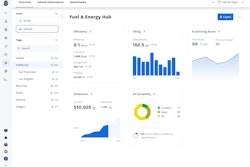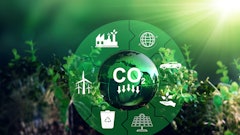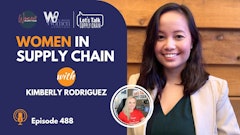
On average, the value of wasted food in retail is equal to roughly double the profits from food sales. The United States wastes roughly 63 million tons, or $218 billion, of food annually. For grocery retailers, food waste represents an $18.2 billion opportunity. Obviously, reducing food waste is a massive opportunity for food retailers to claw back portions of their profits that have been negatively affected by cooling equipment failure, lack of corrective action and de-optimized operating procedures. A new strain of Internet of Things (IoT) known to some as Sensing-as-a-Service combines continuous asset monitoring with prescriptive analytics and automated real-time guidance to optimize asset health and prevent food waste. As more food retailers increase their sensing capabilities throughout their operations in 2023 and beyond, the industry will see greater mitigation of food waste and associated losses.
Food waste throughout the supply chain
Overproduction is one of the biggest causes of food waste, where producers, manufacturers and retailers produce more food than required or fill up display cases that are designed with excessive width, leading to surplus or expired food. Industrialized agriculture has given society the capacity to produce a great wealth of commodity crops, yet distribution and consumption of food products is still highly inefficient with whole portions of the populace experiencing hunger and food insecurity.
Damaged and spoiled produce is another substantive contributor to food waste numbers. Fresh produce is particularly sensitive to temperature, humidity and gas control during the transportation, storage, and handling processes. Supermarkets’ and restaurants’ high quality standards — although necessary for safety and consumer satisfaction — require them to reject food products that do not meet specific criteria outlined in regulatory compliance standards, which often leads to vast amounts of produce going to waste.
According to the Food & Drug Administration (FDA), confusion around expiration dates causes up to 20% of consumer food waste. Differing phrases used by food manufacturers like “Best If Used By,” “Use By,” and “Sell By” lack standardization that leads to consumer uncertainty, and ultimately unnecessary disposal of consumable food. Uneaten or leftover food also contributes to consumer food waste. From restaurants to cafeterias to the dining room table, individuals overestimate how much they should prepare and consume.
Consumers desire more resealable packaging, a desire that could lead to reduction of food waste that is caused by packaging that doesn’t fully protect the product and leads to perceived lack of freshness. Additionally, some packaging is not optimal for proper portion sizes, causing friction in the preparation process for consumers as they decide what to eat and what to save for later. Changing purchasing habits and renewed interest in healthy consumption require food manufacturers to right-size their packaging standards to meet consumer demands and sustainability goals.
Inefficient supply chain management which leads to delays, overproduction, and ineffective use of resources also leads to food waste. Supply chain management should be demand driven to maximize the consumption of goods produced while optimizing on-shelf availability for the consumer and increased profit margin for manufacturers, distributors and retailers.
Effects of food waste throughout the enterprise
The effects of food waste impact departments throughout the enterprise. Food safety and quality assurance professionals need to manage the compliance and customer satisfaction requirements that their programs demand while balancing the need to deter unnecessary rejection of consumable meat, produce, and dried goods.
Loss prevention and asset protection professionals are often caught up with criminal and fraudulent causes of loss while ignoring the slow but sizeable destruction of profits caused by avoidable food waste. Facilities and IT departments have a responsibility to contribute to the cause against unnecessary loss by ensuring that the physical assets that protect food are equipped with the proper technology and the right processes.
Even in-house legal departments should be aware of the risk associated with potential waste, finding ways to mitigate losses associated with spoilage and misuse.
Function of IoT in food waste reduction
For what has historically been a sector of the tech industry primarily focused on hardware, IoT is increasingly being offered as a service with a heightened focus on outcomes rather than simple data collection and distribution. A new kind of IoT known as Sensing-as-a-Service leverages the data collected by physical devices and deploys it through AI-enabled digital decisioning software with prescriptive analytics and guided workflows for task management and corrective actions.
By utilizing the tracking capabilities of IoT to trace the conditions of food products throughout the supply chain, Sensing-as-a-Service platforms use inventory quality data from connected refrigeration assets to reduce food waste and inform loss prevention programs.
On the one hand, these sensing capabilities streamline the recording process for food safety standards and regulatory compliance demands. On the other hand — and this is the essential component for making progress in the fight against food waste — the applied use of these data insights is used to provoke preventative and correction actions from employees who are working throughout the flow of food and the food chain — actions such as:
· Keeping refrigeration units inside transport trucks running and operative
· Calling technicians to repair malfunctioning cooling assets located at distribution warehouses
· Transferring product from nonfunctioning refrigeration assets to functioning assets during a power outage
· Shutting a freezer asset door that has been left open by a customer or fellow team member
· Reusing unused food in a deli or kitchen that can be salvaged if the proper flow of food steps are followed
Empowered with automated guidance rooted in accurate, real-time data provided by IoT infrastructure, employees throughout the supply chain can ensure that products are transported and stored in compliance with regulatory standards that ensure the safe delivery, distribution, and consumption of food. As the level of IoT sophistication of food retailers improves, the percentage of wasted food will decrease, generating improved operational efficiency and ultimately increased profitability.


















